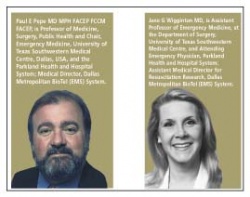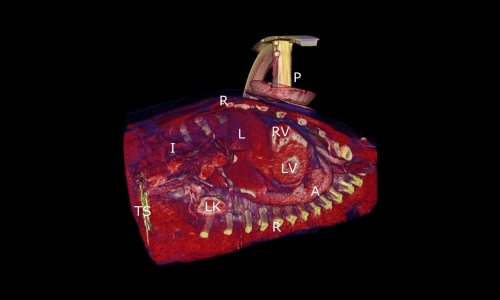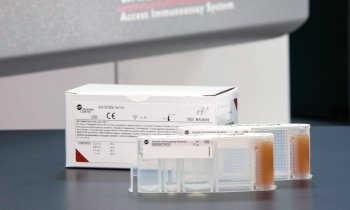Basic cardiopulmonary resuscitation
Professor Paul Pepe and Dr Jane Wigginton discuss current research and concepts that will affect the future of basic CPR.

For over forty years, basic cardiopulmonary resuscitation (CPR) has been performed by laypeople and health professionals with significant life-saving effects. Today basic CPR training also includes training in the use of automated external defibrillation (AED). Along with early defibrillation, research has shown that CPR is the only well-proven life-saving procedure for sudden cardiac death. Although they may very well be effective in aggregate, to date, none of the drugs and no other advanced cardiac life support techniques currently in use have been proven explicitly as contributing to long-term survival with intact neurological function in the clinical setting. Therefore, although it is still infrequently performed in many communities, basic CPR remains a critical component of community-wide life-saving efforts.
Basic CPR also has regained centre-stage in resuscitation research efforts. In addition to evaluating the concept of markedly abbreviating the time to provide effective training, recent investigations suggest that current CPR procedures can be modified easily to significantly improve outcomes beyond what they can do today. Specifically, renewed focus has been directed at not interrupting chest compressions and on a de-emphasis of rescue breathing, especially in the first few minutes after collapse. In addition, evidence has been growing steadily for deferring initial defibrillation attempts until a brief period of chest compressions can first be performed.
Here we briefly highlight each concept and provide some insight to the future of basic CPR.
Abbreviated Training - Research has confirmed that the average person is less likely to learn CPR unless they are compelled to do so for a job or school requirement. One of the rate-limiting steps toward implementing workplace and school-based requirements is being able to make the requisite time commitment considering that several hours of work would need to be interrupted to train all employees using current courses.
Fortunately, recent research has indicated some hope for expanding the numbers of persons trained in CPR. Specifically, new initiatives and teaching techniques that involve video-based adult learning have demonstrated the effectiveness of 20-30 minute training [8]. More recently, resuscitation researchers in Dallas have begun to test a combined CPR-AED training course that is less than 30 minutes. Preliminary information demonstrates that immediate retention and effectiveness of performance are at least similar. This new training technique may eventually prove to be even better because the abbreviated course focuses on the actual skills used and not didactics. It is also less intensive in terms of trainers, allowing large-scale classes to be conducted by a single instructor.
Uninterrupted Compressions - Research has confirmed that interrupting chest compressions to perform defibrillation or to provide rescue breaths, causes abrupt falls in coronary perfusion pressure (CPP) and that restoration of a reasonable CPP will take at least 10-15 seconds after resumption of chest compressions. This means that CPP is inadequate throughout the majority of the resuscitation effort. Also, exacerbating this concern, rescuers actually take longer to provide mouth-to-mouth breaths and defibrillation than one would presume. Furthermore, even a 10-15 second delay in delivering the shock (after the order to ‘halt CPR’ has been given), will lead to dramatically diminished rates of resuscitation. Therefore, recent efforts have gone into developing AED devices that can analyse the cardiac electrical activity without interruption of compressions and deliver the shock at the moment the rescuer backs away from the chest. Also, to maintain continuous chest compressions, scientists are investigating the efficacy of deleting rescue breaths during the first minutes after cardiac arrest, particularly when gasping is present.
Compressions-only CPR - As mentioned, recent studies have confirmed that compressions-only CPR may be even more effective than traditional CPR that includes mouth-to-mouth ventilation, particularly in the first few minutes following a sudden cardiac arrest. Not only do the rescue breaths frequently interrupt compressions and thus the maintenance of adequate CPP, but it also can add to inhibited venous return because of the positive intra-thoracic pressure generated by the positive pressure ventilation.
In fact, significant gas exchange still occurs without rescue breathing. Chest recoil after release of the compression tends to move air into the airways (assuming the airways are open). Also, most people likely to survive a cardiac arrest will be gasping, a unique respiratory event that not only can rapidly expand a larger volume of dependent lung spaces, but also generates a stronger intra-thoracic vacuum than a normal breath. In turn, this generates better pulmonary oxygenation and more CO2 clearance, while also generating better venous return. In addition, by not interrupting chest compressions, perfusion to the brain and respiratory apparatus is better sustained, thus prolonging gasping and, in turn, better oxygenation, CO2 clearance and circulation. Paradoxically, by not stopping to breathe for the person, respiratory functions are actually prolonged and improved.
The problem is that gasps eventually deteriorate and, also, not all patients gasp and not all cardiac arrests are sudden. Therefore, some lung inflation will need to be provided sooner or later. Nevertheless, even when breaths are provided, they are not needed as often as previously thought. The traditional 15:2 compression-ventilation ratio may be better at 100:2 or 50:2 for many of the reasons stated previously and because ventilation should match perfusion. In low blood flow states like CPR situations, CO2 is not produced as readily and, even when it is, it is not circulated back to the lungs for removal. Therefore, ventilatory demands are low until full circulation and strong pulses are restored. Although theoretical models indicate that children should receive breaths more often, the need is much less than the current 5:1 ratio proscribed for children.
CPR Before Defibrillation - Growing evidence has indicated that once ventricular fibrillation (VF) has been prolonged beyond four or five minutes, remaining cardiac energy supplies will become depleted and a relatively de-oxygenated heart is less apt to respond to defibrillation. It has become apparent that, once several minutes of VF have elapsed, preparing the heart for defibrillation with basic CPR and/or certain medications, will make a heart more amenable to successful defibrillation with return of spontaneous circulation. Although it is clear that immediate counter-shock is the most effective strategy in the first few minutes after onset of VF, laboratory studies support the use of vasopressor drugs to enhance CPP during CPR conditions prior to defibrillation. Furthermore, two recent clinical studies demonstrated the probable value of providing a brief period (1.5 to 3 minutes) of basic CPR prior to defibrillation. While these studies have their limitations, they are the best available data and clearly indicate the value of chest compressions prior to defibrillation unless it is a witnessed collapse in the presence of a defibrillator. Combined with the information previously discussed, it is clear that a re-focus on chest compressions must be emphasized in CPR training and performance.
Caveats - Although the research discussed here is compelling enough to indicate a need to change current CPR techniques, there still is no worldwide consensus on these issues nor, in some cases, is there conclusive enough evidence to effect worldwide changes in CPR training. Nevertheless, it remains clear that many of these proposed changes will eventually become mainstream as the evidence grows and more data are accumulated. There is little doubt that more emphasis should be placed on the performance of aggressive, continuous chest compressions that are interrupted only infrequently, if at all. Most importantly, this discussion again portrays the critical importance of basic CPR and our need to ensure that every person is trained and knows how to perform this life-saving intervention when it is needed.
Reprints/references and correspondence: Paul.Pepe@UTSouthwestern.edu
03.08.2006







